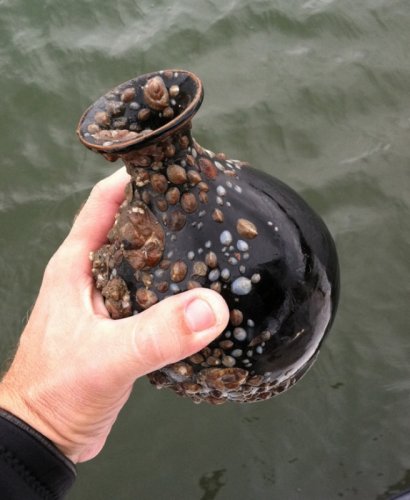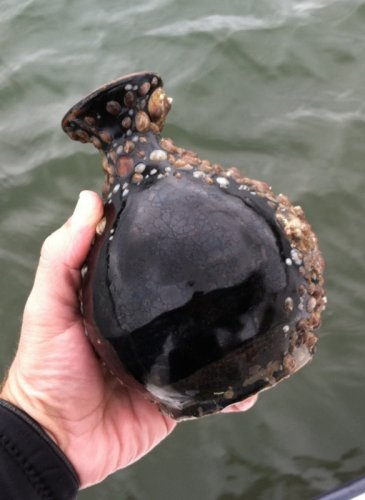ChrisP1
Well-Known Member
Hey Guys,
It's been a while since I've bee on the site. Too busy with field work, etc..
I found what I think is a Japanese sake bottle while diving recently. Although it looks heavy, it is actually very light and apparently thin-walled. It was found where I have previously found bottles from the mid 1800's right up into the 20th century. Not clear when this would date from. It has cleaned up very nicely so far (still soaking in FW) with only minor chipping to the bottom of the ring around the base.
It is a very dark brown to almost black with some rust color coming through at the rim and on the bottom. Along the base the underglaze color, more of a mottled dark brown shows through. Looks like the upper 3/4 has two coats of glaze.
Any ideas would be greatly appreciated.
ChrisP

It's been a while since I've bee on the site. Too busy with field work, etc..
I found what I think is a Japanese sake bottle while diving recently. Although it looks heavy, it is actually very light and apparently thin-walled. It was found where I have previously found bottles from the mid 1800's right up into the 20th century. Not clear when this would date from. It has cleaned up very nicely so far (still soaking in FW) with only minor chipping to the bottom of the ring around the base.
It is a very dark brown to almost black with some rust color coming through at the rim and on the bottom. Along the base the underglaze color, more of a mottled dark brown shows through. Looks like the upper 3/4 has two coats of glaze.
Any ideas would be greatly appreciated.
ChrisP






